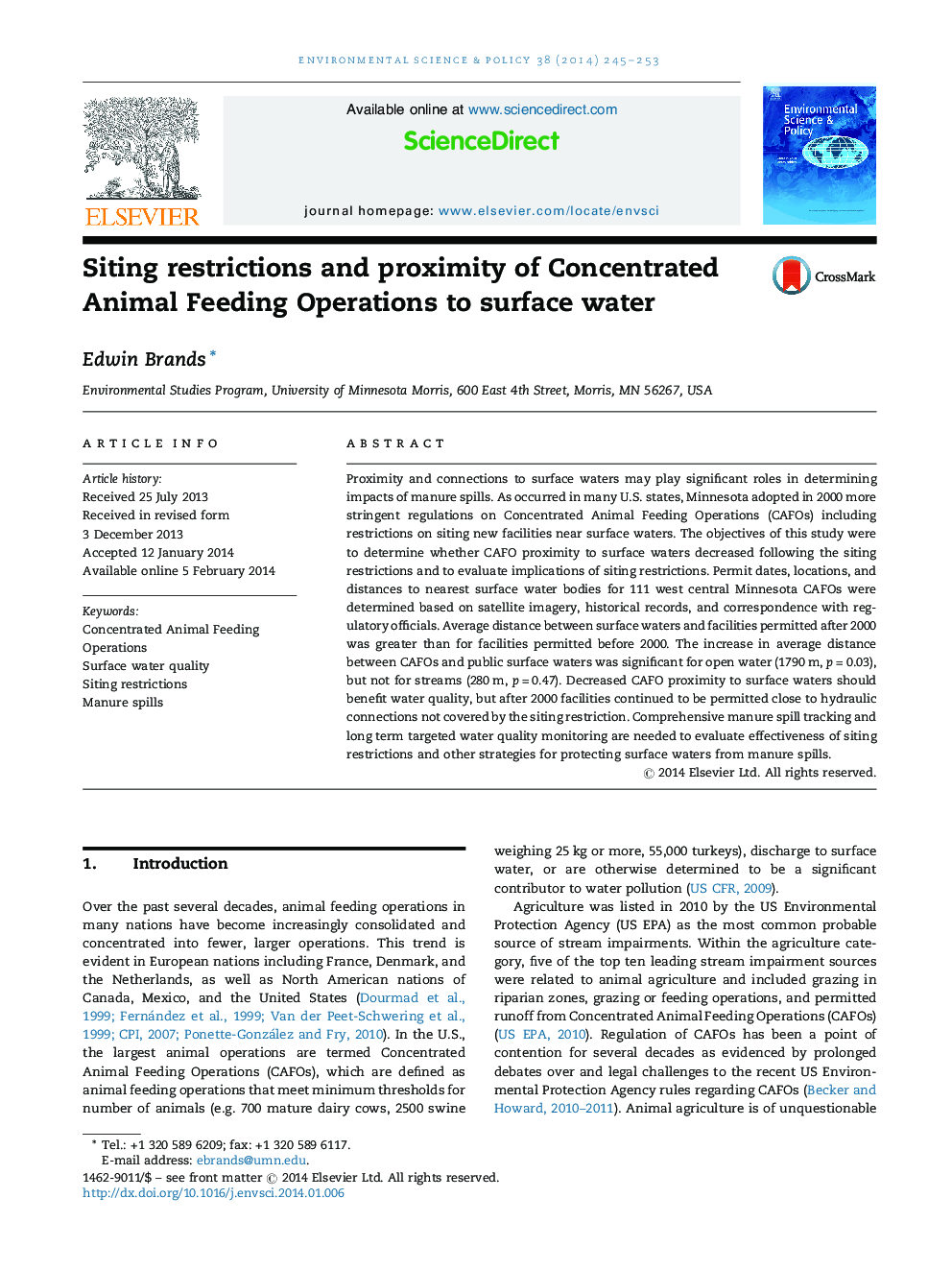| Article ID | Journal | Published Year | Pages | File Type |
|---|---|---|---|---|
| 7467997 | Environmental Science & Policy | 2014 | 9 Pages |
Abstract
Proximity and connections to surface waters may play significant roles in determining impacts of manure spills. As occurred in many U.S. states, Minnesota adopted in 2000 more stringent regulations on Concentrated Animal Feeding Operations (CAFOs) including restrictions on siting new facilities near surface waters. The objectives of this study were to determine whether CAFO proximity to surface waters decreased following the siting restrictions and to evaluate implications of siting restrictions. Permit dates, locations, and distances to nearest surface water bodies for 111 west central Minnesota CAFOs were determined based on satellite imagery, historical records, and correspondence with regulatory officials. Average distance between surface waters and facilities permitted after 2000 was greater than for facilities permitted before 2000. The increase in average distance between CAFOs and public surface waters was significant for open water (1790 m, p = 0.03), but not for streams (280 m, p = 0.47). Decreased CAFO proximity to surface waters should benefit water quality, but after 2000 facilities continued to be permitted close to hydraulic connections not covered by the siting restriction. Comprehensive manure spill tracking and long term targeted water quality monitoring are needed to evaluate effectiveness of siting restrictions and other strategies for protecting surface waters from manure spills.
Related Topics
Physical Sciences and Engineering
Energy
Renewable Energy, Sustainability and the Environment
Authors
Edwin Brands,
